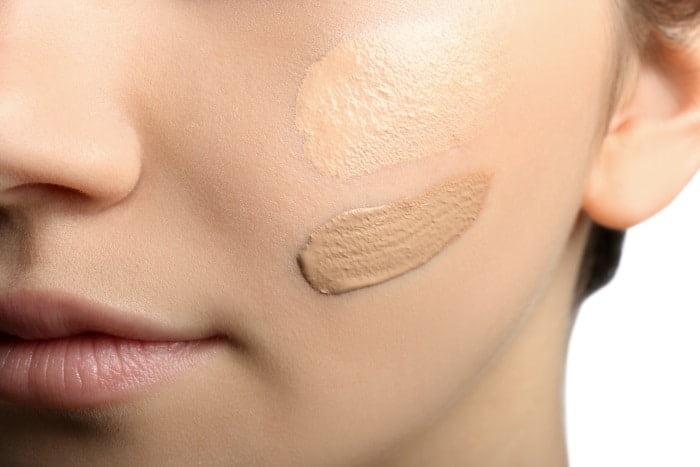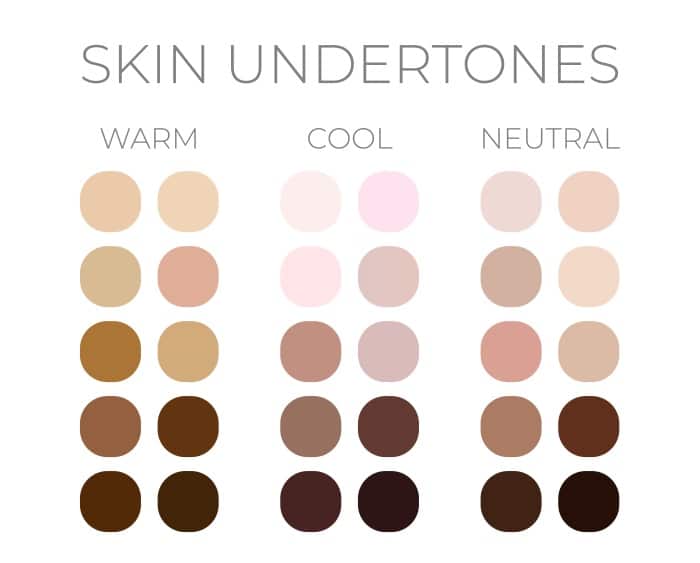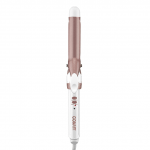Choosing the right foundation shade is a critical step in achieving a flawless makeup look, and for those with fair skin tones, it can be especially challenging. With a multitude of options available in the market, finding the perfect match that seamlessly blends with your complexion may seem overwhelming.
This guide aims to provide a comprehensive approach to choose foundation shade for fair skin, even when testing at home is not an option. From understanding your undertones to researching product reviews and utilizing online resources, we’ll explore step-by-step strategies to increase your chances of finding a suitable match.
So, how to choose foundation shade for fair skin?
Understanding Your Undertone: Undertones play a crucial role in determining the right foundation shade. Before delving into the world of foundation shades, it’s essential to understand your undertone. Undertones are the subtle hues beneath the surface of your skin that can affect how certain colors look on you. There are three main undertones: cool, warm, and neutral.
- Cool Undertones: If your skin has hints of pink, red, or blue, you likely have cool undertones.
- Warm Undertones: Skin with yellow, peach, or golden hues indicates warm undertones.
- Neutral Undertones: Neutral undertones feature a balanced mix of both warm and cool tones.
Determining your undertone is crucial as it helps narrow down the spectrum of foundation shades that will complement your skin tone most effectively.
Researching Foundations with Shade Descriptions: Once you’ve identified your undertone, the next step is to research foundations with shade descriptions that indicate undertones. Many online beauty retailers provide detailed descriptions of shades, helping you narrow down options based on your undertones. Look for keywords such as “cool,” “warm,” or “neutral” in the shade descriptions to guide your selection.
Utilizing Online Foundation Matching Tools: Take advantage of online tools provided by beauty brands to help you find your perfect foundation match. These tools often consider your undertones and provide recommendations based on the information you provide. Input details about your skin tone, undertones, and preferences to receive personalized suggestions.
Reading Reviews and Watching Swatch Videos: Explore online reviews and watch swatch videos on platforms like YouTube. Look for reviews from individuals with similar skin tones and undertones to yours. Pay attention to how the foundation looks in different lighting conditions and its overall performance. Real-life experiences can offer valuable insights into how a foundation performs on fair skin.
Consulting Virtual Beauty Advisors: Some beauty brands provide virtual beauty advisors or customer service representatives who can assist you in finding the right foundation match. Share information about your undertones and preferences for personalized recommendations. Virtual consultations can provide tailored advice that takes your unique characteristics into account.
Considering Buildable Formulas: Opt for foundations with buildable coverage. These formulas allow you to start with a sheer layer and gradually build up to your desired coverage without committing to a full application at once. Buildable formulas provide flexibility and enable you to customize the level of coverage based on your preferences.
Checking Return Policies: Before making a purchase, check the return policies of the retailer or brand. Knowing that you can return or exchange the product if it doesn’t match your expectations adds an extra layer of assurance. Review the terms and conditions to ensure a hassle-free return process if needed.
Mixing and Customization: If you’re unable to find the perfect match, consider mixing different foundation shades or using color-adjusting drops to customize the color to your liking. Some brands offer mix-in drops or customizable palettes, allowing you to experiment and create a personalized blend.
Sample Sizes or Travel Kits: Take advantage of brands that offer sample sizes or travel kits with mini versions of their popular foundations. This allows you to try multiple shades without committing to a full-sized product. Sampling different shades gives you the opportunity to test how each one complements your skin tone and undertones.
Remember, the key is to gather as much information as possible about the undertones and shades before making a purchase. While it may not be as foolproof as testing in person, these strategies can significantly improve your chances of finding the ideal foundation shade for your fair skin without leaving your home.
Testing Foundation Shades: When selecting a foundation shade for fair skin, it’s crucial to test the product in natural light to ensure an accurate match. Here’s how to do it effectively:
- Visit a Beauty Store: Head to a beauty store with a wide range of foundation shades for fair skin. Many stores offer sample testers that you can apply to your jawline or the side of your face for comparison.
- Test in Natural Light: Natural light provides the most accurate representation of how the foundation will look on your skin. Apply a small amount of the foundation shades you’re considering on your jawline and blend it out. Step outside or near a window to assess the color in natural light.
- Observe Undertone: Pay attention to how the foundation shade interacts with your undertone. Ensure that the foundation seamlessly blends with your skin without appearing too pink, yellow, or ashy.
Choosing the Right foundation shade Formula for your fair skin
In addition to finding the perfect shade, selecting the right foundation formula is equally important for fair skin. Here are some considerations:
- Lightweight Formulas: Opt for lightweight formulas such as tinted moisturizers, BB creams, or sheer foundations for a natural and dewy finish.
- Buildable Coverage: If you prefer more coverage, choose foundations with buildable coverage that allow you to layer the product without appearing cakey or heavy.
- Matte vs. Dewy Finish: Consider your skin type and desired finish. Matte foundations are ideal for controlling oil and shine, while dewy formulas add luminosity and hydration to dry skin.
When it comes to selecting the right foundation formula for fair skin, there are several additional considerations that can enhance your overall makeup experience. Here are some unique tips and advice to help you make the best choice:
- Hydration and Moisture Balance: Fair skin can often be sensitive and prone to dryness. Opting for a foundation formula that offers hydration and moisture balance is essential for maintaining skin health and preventing dry patches. Look for foundations infused with ingredients like hyaluronic acid, glycerin, or ceramides, which help to lock in moisture and keep your skin feeling nourished throughout the day.
- SPF Protection: Protecting fair skin from harmful UV rays is crucial for maintaining its delicate complexion and preventing sun damage. Consider choosing a foundation formula that contains SPF protection to shield your skin from the sun’s harmful effects. Look for foundations with broad-spectrum SPF coverage of at least SPF 30 to ensure adequate protection against both UVA and UVB rays.
- Non-Comedogenic Formulas: Fair skin can be more prone to acne and breakouts, especially if the wrong foundation formula is used. To prevent clogged pores and breakouts, opt for non-comedogenic foundation formulas that are specially designed to be lightweight and non-pore-clogging. These formulas allow your skin to breathe and reduce the risk of acne flare-ups, making them ideal for sensitive or acne-prone fair skin.
- Color-Correcting Properties: Fair skin tones often come with their own set of challenges, including redness, discoloration, or uneven skin tone. Choosing a foundation formula with color-correcting properties can help neutralize any imperfections and create a more even canvas for makeup application. Look for foundations with green or yellow undertones to counteract redness, or peachy tones to brighten dull complexions.
- Longevity and Wearability: For busy days or special occasions, selecting a foundation formula with long-lasting wearability is essential to keep your makeup looking fresh and flawless throughout the day. Look for foundations that offer long-wear or transfer-resistant properties, ensuring that your makeup stays put without smudging or fading, even in humid or high-activity environments.
- Skin Barrier Support: Fair skin tends to have a thinner skin barrier compared to other skin tones, making it more susceptible to environmental stressors and irritants. Choosing a foundation formula that supports and strengthens the skin barrier can help protect against external aggressors and maintain skin resilience. Look for foundations enriched with antioxidants, vitamins, and botanical extracts that nourish and fortify the skin, promoting overall skin health and vitality.
- Multi-Tasking Formulas: To streamline your beauty routine and save time, consider opting for multi-tasking foundation formulas that offer additional skincare benefits or coverage options. Look for foundations that combine skincare ingredients like niacinamide, vitamin C, or peptides, which help to address specific skin concerns while providing seamless coverage. Additionally, consider dual-purpose formulas that can function as both foundation and concealer, providing targeted coverage where needed without the need for multiple products.
By considering these unique factors and tips when selecting a foundation formula for fair skin, you can ensure that your makeup not only enhances your natural beauty but also supports the health and vitality of your skin. Experiment with different formulas and textures to find the perfect foundation that meets your unique skincare needs and preferences, allowing you to confidently flaunt your flawless complexion every day.
Additional Tips for Choosing Foundation for Fair Skin:
- Consider Your Skin Sensitivities: If you have sensitive skin, opt for foundations formulated without harsh chemicals or fragrances to prevent irritation.
- Custom Mixing: Don’t hesitate to mix different foundation shades or formulas to achieve the perfect match. Many brands offer mix-in drops or customizable palettes for tailored results.
- Seek Professional Assistance: If you’re unsure about your undertone or struggling to find the right shade, consult with a beauty expert or makeup artist for personalized recommendations.
When considering your skin sensitivities, it’s crucial to delve deeper into the ingredients list of the foundation you’re considering. Here are some additional points to keep in mind:
- Fragrance-Free Formulas: Fragrances can be a common irritant for sensitive skin types. Opting for fragrance-free foundation formulas can help minimize the risk of irritation and allergic reactions. Look for products labeled as “fragrance-free” or “unscented” to ensure that no added fragrances are included in the formulation.
- Hypoallergenic Formulas: If you have particularly sensitive skin that is prone to allergies or reactions, choosing hypoallergenic foundation formulas can provide added peace of mind. These formulas are specially formulated to minimize the risk of allergic reactions and are often tested by dermatologists for safety on sensitive skin.
- Minimal Ingredient Lists: When selecting a foundation for sensitive skin, less is often more. Opt for foundation formulas with minimal ingredient lists, as this reduces the likelihood of potential irritants or allergens. Look for products that contain simple, gentle ingredients that are unlikely to cause adverse reactions.
- Avoiding Common Irritants: Certain ingredients commonly found in foundations can trigger sensitivity reactions in some individuals. These include alcohol, parabens, sulfates, and synthetic fragrances. Check the ingredient list carefully and avoid products that contain these potential irritants, especially if you have a history of sensitivity or allergies.
- Patch Testing: Before applying a new foundation to your entire face, consider conducting a patch test to assess your skin’s reaction. Apply a small amount of the foundation to a discreet area of your skin, such as the inside of your wrist or elbow, and monitor for any signs of redness, itching, or irritation over the next 24 hours. If no adverse reactions occur, you can proceed with using the foundation on your face with greater confidence.
- Consulting a Dermatologist: If you have persistent skin sensitivities or concerns about potential reactions to certain ingredients, consider consulting a dermatologist for personalized advice and recommendations. A dermatologist can assess your skin type and specific sensitivities, and provide guidance on suitable foundation formulas that are less likely to cause irritation or exacerbate existing skin conditions.
- Undertones and Pigment Matching: Understanding your undertones is crucial, but it’s equally important to consider the intensity of pigment in the foundation. Fair skin tones can range from porcelain to light beige, and choosing a foundation with the right depth of pigment ensures a natural and seamless blend. Avoid shades that are too light or too dark, as they can create an unnatural contrast against your fair complexion.
- Consider Seasonal Changes: Fair skin tones can be affected by seasonal changes, with sun exposure potentially altering your skin’s undertones. It’s a good practice to reassess your foundation shade with the changing seasons. During summer months, when your skin may have a warmer undertone due to sun exposure, you might need a slightly different foundation shade compared to the winter months when your skin is less sun-kissed.
- Sheer vs. Full Coverage for Versatility: While fair skin often benefits from a more natural look, having a foundation that can be built up to full coverage when needed provides versatility. Opt for a foundation with buildable coverage, allowing you to tailor your makeup to different occasions – from everyday wear to special events.
- Prepping the Canvas – Primer Magic: Applying a primer before your foundation can make a significant difference. For fair skin, a hydrating primer can add an extra layer of moisture, creating a smooth base for foundation application. Additionally, using a color-correcting primer can help neutralize any redness or uneven skin tone, enhancing the overall effectiveness of your foundation.
- Invest in Quality Makeup Tools: The tools you use can impact how your foundation appears on the skin. Consider investing in high-quality makeup brushes or sponges specifically designed for foundation application. These tools can help achieve a flawless finish, prevent streaks, and ensure that your foundation seamlessly blends with your fair skin.
- Mixing and Customizing Shades: If you find that your perfect foundation shade is not available off the shelf, don’t hesitate to mix different shades to create a customized blend. Many beauty brands offer mix-in drops or customizable foundation palettes, allowing you to tailor the color precisely to your fair skin’s unique undertones.
- Trial and Error with Samples: Before committing to a full-sized product, take advantage of sample sizes or trial kits offered by brands. Sampling different shades and formulas lets you test how the foundation interacts with your skin throughout the day, ensuring that it meets your expectations before making a final purchase.
- Adapt to Your Skin’s Needs: Your skin can change over time due to various factors, including hormonal shifts, age, or changes in skincare routine. Regularly reassess your foundation choice to adapt to your skin’s evolving needs. If you notice changes in your skin tone or undertones, be open to exploring new foundation options that better suit your current complexion.
- Setting Your Foundation: To prolong the wear of your foundation, especially for those with fair skin that might be prone to showing imperfections, consider setting it with a translucent setting powder. This helps control shine, reduces the risk of makeup transfer, and ensures a polished finish.
- Skin Care as Foundation Prep: A solid skincare routine enhances the effectiveness of your foundation. Keep your skin well-hydrated and exfoliated to create a smooth canvas for makeup application. Additionally, using a moisturizer or primer with ingredients like hyaluronic acid can provide an extra boost of hydration, contributing to a radiant complexion.
- Consistent Lighting for Application: Ensure consistent lighting during your foundation application. Natural light is ideal, but if applying makeup indoors, use lighting that closely resembles natural daylight. This helps avoid mismatched foundation choices that can occur when applying makeup under varied lighting conditions.
By prioritizing ingredients that are gentle and non-irritating, avoiding common allergens and irritants, and conducting patch tests when introducing new products, you can help minimize the risk of adverse reactions and keep your sensitive skin looking and feeling its best.
Conclusion
Choosing foundation shade for fair skin requires careful consideration of undertones, formula preferences, and testing in natural light. By understanding your undertone, testing foundation shades effectively, and selecting the right formula, you can achieve a flawless base that enhances your natural beauty. With these tips in mind, navigating the world of foundation shades becomes an empowering and enjoyable experience.







